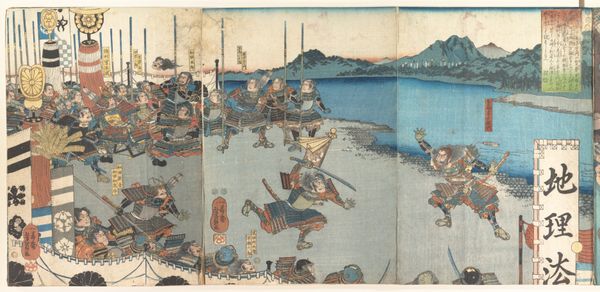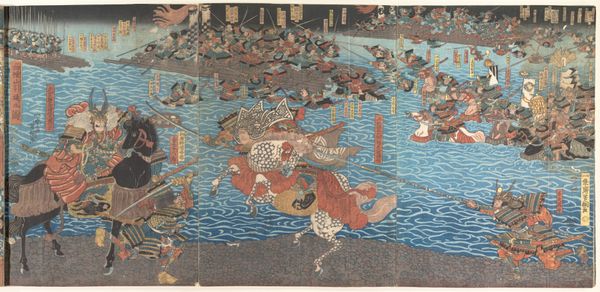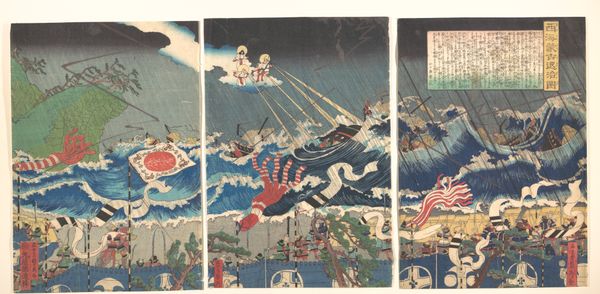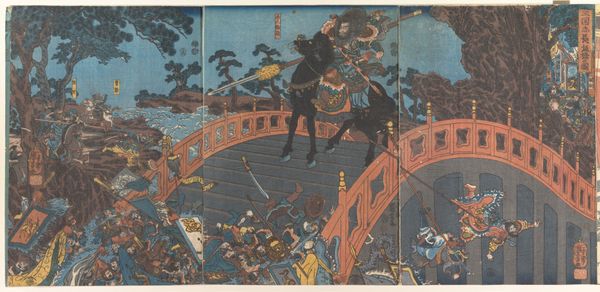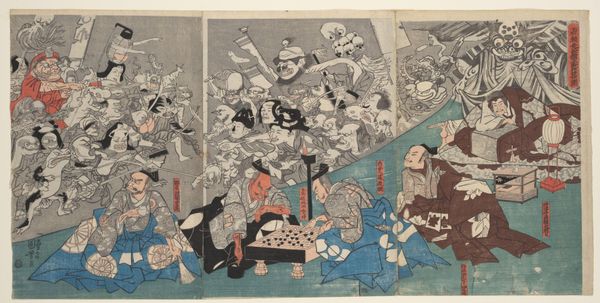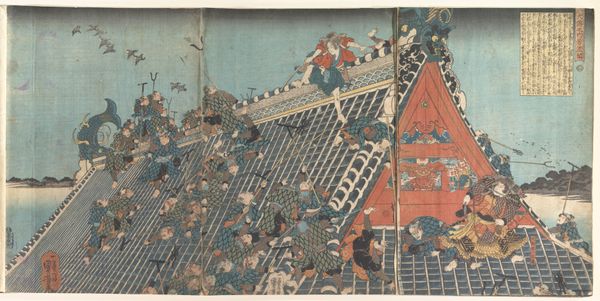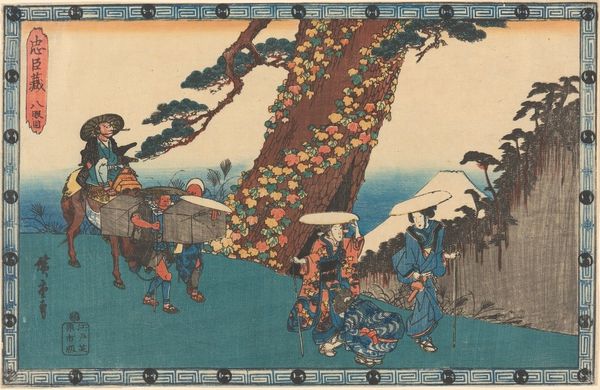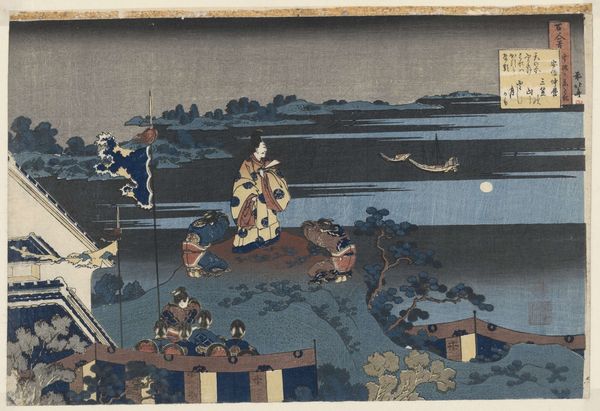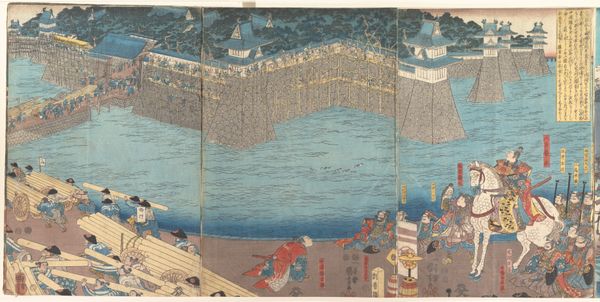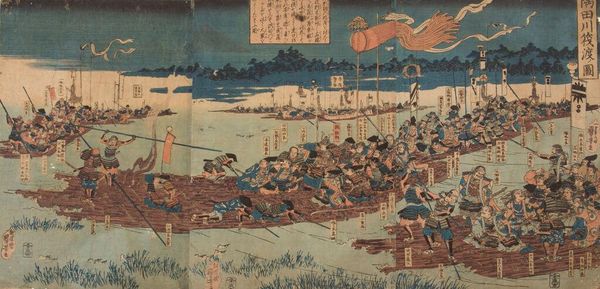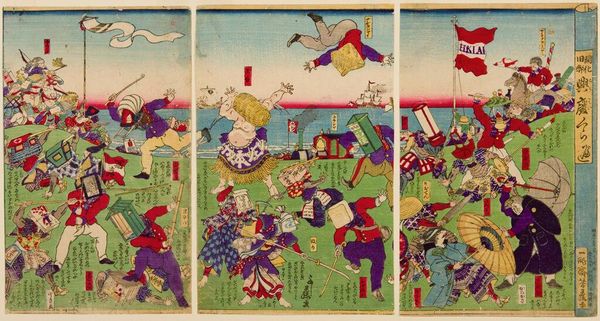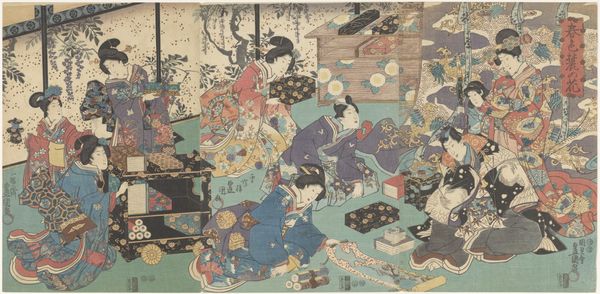
One of Fifteen Triptychs of Famous Battlescenes 19th century
0:00
0:00
print, woodblock-print
#
narrative-art
# print
#
asian-art
#
ukiyo-e
#
japan
#
figuration
#
woodblock-print
#
history-painting
#
mixed media
Dimensions: Each print: 13 15/16 × 9 7/8 in. (35.4 × 25.1 cm)
Copyright: Public Domain
Editor: This is "One of Fifteen Triptychs of Famous Battlescenes," a 19th-century woodblock print by Utagawa Kuniyoshi, currently held at The Met. The detail is astonishing, a flurry of activity frozen in a single moment. What can you tell me about its broader significance? Curator: This work, like much ukiyo-e, offers a window into the social and political climate of its time. Battle scenes weren't just about depicting warfare; they were often loaded with messages about loyalty, sacrifice, and the established social order. Kuniyoshi’s romanticized depictions of historical battles bolstered national identity and Samurai ethos during a period of shifting power structures. What kind of dialogue do you think prints like this facilitated in 19th century Japan, in a context of urbanization and changing class structures? Editor: So, beyond the visual spectacle, this triptych may have served a propagandistic role, reinforcing traditional values in a rapidly modernizing society. I hadn't considered the relationship between artistic representation and political agenda in this detail. Curator: Exactly. The *samurai* weren't just warriors, they embodied an ideal. Think about how this romanticized portrayal of military prowess might resonate with a populace facing internal conflicts and Western pressures. What kind of social and historical factors can give an added resonance to a military hero on horseback? What are the nuances that we might be missing from a modern Western viewpoint? Editor: The element of cultural pride would definitely stand out for contemporary viewers. This artwork then becomes less about objective historical record, and more about the construction of identity through a curated past. Curator: Precisely. And who gets to curate that past, and whose stories are centered, are key questions. Examining this work through that lens encourages us to unpack the complex interplay of art, power, and cultural narrative, then and now. Editor: Thank you, I see it with a completely different understanding now. It's about power and identity on multiple levels.
Comments
No comments
Be the first to comment and join the conversation on the ultimate creative platform.
